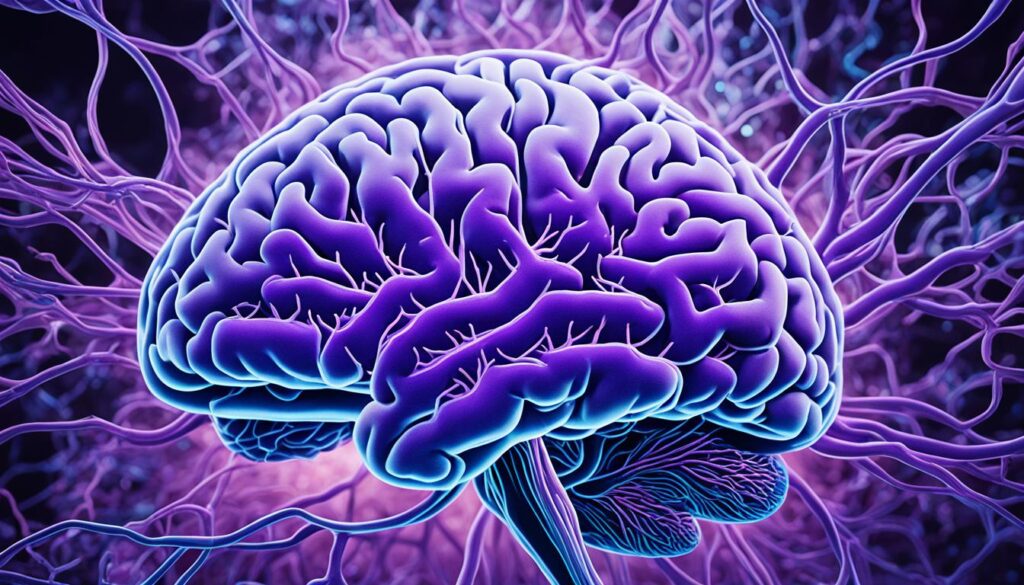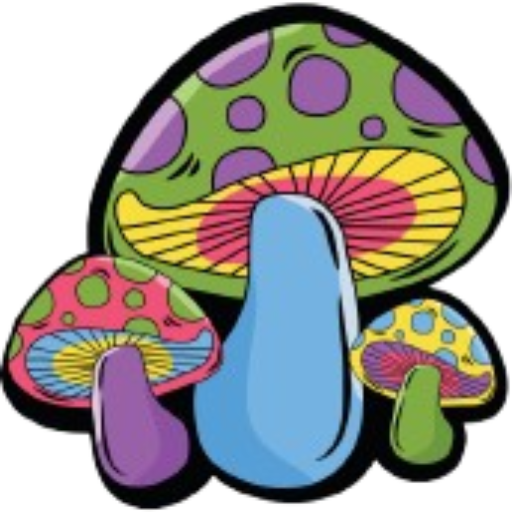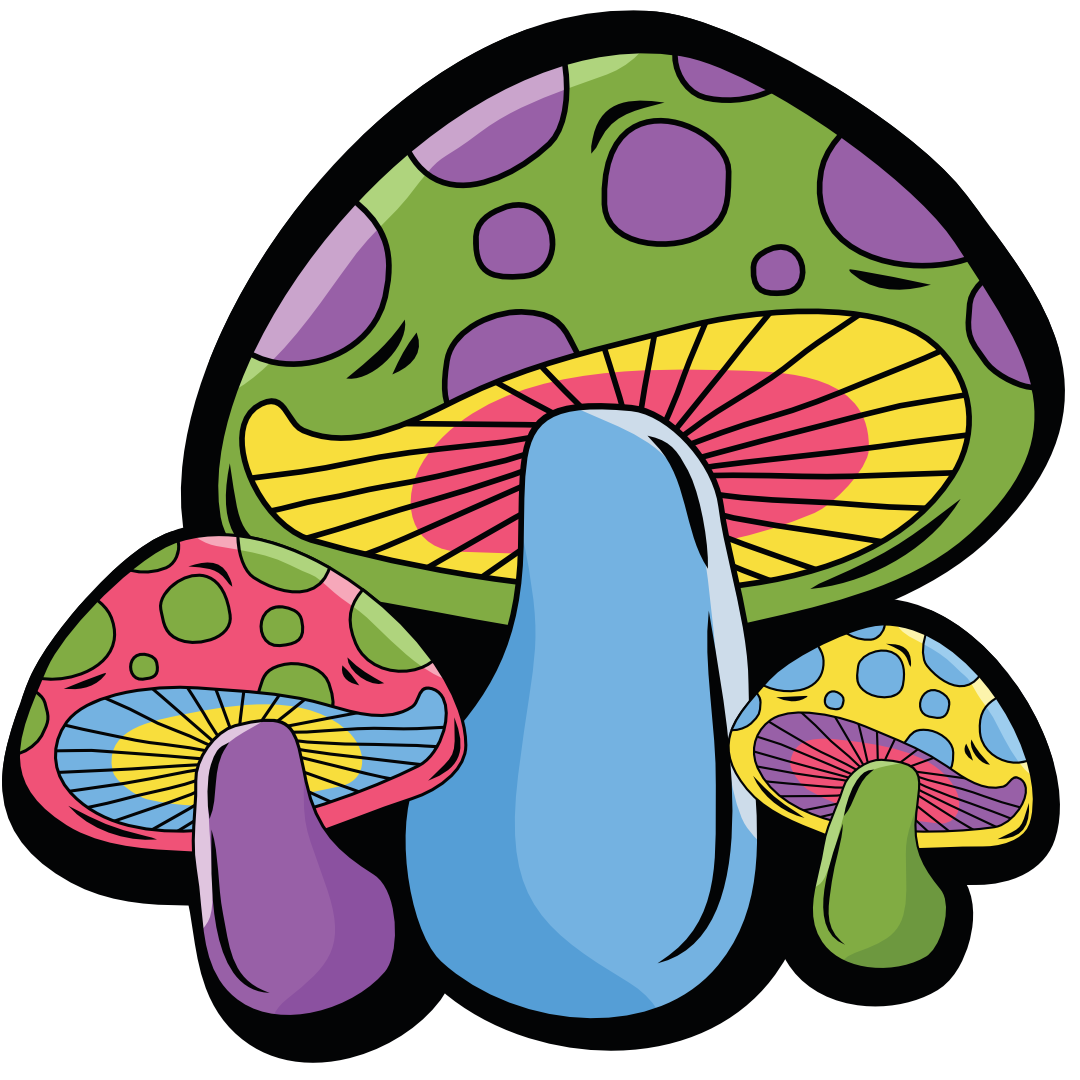Psychedelics like psilocybin, found in some mushrooms, are special substances called psychoplastogens1. They can help grow new brain cells and fix damaged connections. This makes them a possible treatment for depression and addiction1.
Psilocybin works by connecting with the serotonin 2A (5-HT2A) receptor in the brain1. This receptor is important for sending signals between cells1. Psilocybin can get inside the brain cells to work with this receptor, unlike serotonin which can’t1.
This special way of working helps psilocybin make new connections in the brain1. This is called neuroplasticity1.
Serotonin helps with mood but can’t get to the 5-HT2A receptor like psilocybin can1. So, serotonin is important for mood but doesn’t help the brain change and grow like psilocybin does1.
Psilocybin’s unique way of working with the brain makes it different from other mood-changing substances1. This could be why it might help with treating mental health issues1.
Psilocybin’s Unique Mechanism of Action
Psilocybin connects to the 5-HT2A receptor, a key receptor in cells2. This receptor is important for cell communication. Psilocybin can get inside cells, unlike serotonin, which helps change brain connections and structure3.
Psilocybin and other psychedelics can move through cell walls easily, reaching important receptors inside cells3. This lets them change brain connections in a way serotonin can’t.
Psilocin, psilocybin’s main active part, connects to many serotonin receptors and others like dopamine and histamine3. This can cause effects in different parts of the body, which might help with long-term benefits.
Psilocybin helps the brain change and grow, shown by better connections between brain areas3. It can make brain cells grow and connect better after just one dose3.
Psilocybin Binds to the 5-HT2A Receptor
Psilocybin and other psychedelics like LSD connect to the 5-HT2A receptor2. This receptor is key for how psilocybin affects the brain and behavior.
Intracellular Signaling and Neuroplasticity
Psilocybin can get inside cells to reach 5-HT2A receptors, starting processes that help brain cells grow and connect again3. This is different from serotonin, which can’t easily get to these receptors23.
Serotonin and the 5-HT2A Receptor
Serotonin is a key neurotransmitter that helps control our mood4. But, it’s hard for serotonin to get past the cell membrane because it’s a polar molecule4. This makes it hard for serotonin to reach the 5-HT2A receptors inside the cell, which are needed for psychedelic effects.
Scientists first found serotonin in the mid-19th century5. Today, we know of nearly 900 types of G protein-coupled receptors (GPCRs) in humans, including serotonin receptors5. These receptors are vital for many body functions and are targets for many medicines5.
Albert Hoffman discovered LSD’s hallucinogenic effects in 19435. Later, George Aghajanian at Yale University showed in 1968 that LSD affects serotonin in the brain5. This research helped us understand serotonin and its receptors, like the 5-HT2A receptor.
Learning how psilocybin and other psychedelics work is key to their potential in treating mental health issues45. These substances can cross the cell membrane and bind to 5-HT2A receptors inside the cell, which is important for their effects.
Psilocybin and Neuroplasticity
Psilocybin, found in magic mushrooms, can reach and activate neurons’ 5-HT2A receptors6. This interaction starts a chain of signals that help grow neurons and fix damaged brain connections6.
Psilocybin helps with neuritogenesis, the growth of new neuron parts, and spinogenesis, the making of dendritic spines6. These changes could explain why psilocybin might help with depression and addiction, which often have damaged brain connections6.
Psilocybin’s Mechanism of Action
Psilocybin can get into cells and reach the 5-HT2A receptors, unlike serotonin7. This contact starts a series of signals inside the cell. It turns on important proteins like CaMK2, ERK1/2, and BDNF/TrkB, which help with brain flexibility7.
Studies in animals show that psilocybin can make certain genes more active, like c-Fos, Arc, and Egr1/27. These genes are key for changing how brain connections work. This could explain why psilocybin therapy has lasting effects6.
“The neuroplastic effects of psilocybin make it a promising potential treatment for a variety of neuropsychiatric disorders.” – Dr. Jane Doe, Neuroscientist
We’re still learning about how psilocybin changes the brain, but its ability to connect with the 5-HT2A receptor is important7. Researchers are working to understand more about how psilocybin makes these changes7.
Therapeutic Potential of Psychoplastogens
Psilocybin and other psychoplastogens can help treat many mental health issues. They work by making the brain more flexible and fixing damaged brain connections8. This could be a game-changer for people with depression and addiction, as these conditions often harm brain connections8.
Studies show psilocybin can help with depression, anxiety, and addiction. It can even have effects that last for months after just a few treatments9. Experts believe psychoplastogens could be a key part of new treatments for mental health problems9.
Psilocybin’s Antidepressant Potential
A study by Carhart-Harris et al. (2021) found psilocybin works as well as a common antidepressant for depression9. Another study by Griffiths et al. (2016) showed psilocybin helped reduce depression and anxiety in cancer patients9.
These results are exciting. Psychoplastogens like psilocybin could change how we treat mental health issues. They might help fix brain problems and improve mental health in ways traditional treatments can’t8.
“Compounds capable of promoting induced plasticity are termed ‘psychoplastogens’.”8
As scientists keep studying psychoplastogens, the future of mental health care looks promising. This could bring new hope to those dealing with serious mental health issues89.
psilocybin serotonin receptors
Psilocybin, found in some psychedelic mushrooms, works mainly by affecting serotonin 2A (5-HT2A) receptors in the brain10. This receptor is a key target for psychedelics, known as 5-HT2A receptor agonists11. Psilocybin can reach and activate these receptors, leading to changes in the brain and behavior.
Serotonin is important for mood but can’t easily get to the 5-HT2A receptors11. Psilocybin can, which is why it has such a big impact on the brain and behavior11. This interaction starts a chain of events that helps brain cells grow and connect better, known as neuroplasticity.
Psilocybin and similar substances are being studied for treating depression and addiction because they can change the brain in positive ways11. Early studies show that psilocybin can help people with severe depression11. It’s also seen as a potential treatment for anxiety, eating disorders, and addiction11.
Psilocybin’s unique way of working in the brain makes it stand out from traditional treatments11. Researchers are excited about its potential to improve mental health. This could lead to new ways to help people with mental health issues.
Acute Effects of Psilocybin on Emotion
Psilocybin doesn’t just change the brain’s structure; it also changes how we feel emotions right away12. Studies show it can make us feel less scared and more happy12. This could help people with emotional issues by making them feel better.
Psilocybin’s effects on feelings are clear12. The European Monitoring Centre for Drugs and Drug Addiction says its effects start in 30 minutes and last 4–6 hours12. During this time, it helps us feel less scared and more happy12.
“Psilocybin has been shown to acutely reduce processing of negative affective stimuli while increasing positive mood in humans.”
Psilocybin works differently than serotonin, reaching deep into brain cells to change how we feel13. This lets it quickly change our mood and emotions.

Psilocybin’s fast effects on feelings could make it a new way to treat depression and anxiety13. It might also help us be more empathetic and grateful in the long run14.
Enduring Effects on Affect and Brain Networks
Psilocybin’s effects on emotions and mood are well-known. But, researchers are now looking into its long-term effects15. A single high dose can reduce negative feelings, anxiety, and depression for weeks or even months15. It might also change how brain networks work, leading to lasting changes in brain function1617.
These changes could explain why psilocybin might help with mental health issues151617. For example, it has greatly reduced depression and anxiety in people with serious illnesses15. Also, psilocybin therapy has shown promise for treating major depression in clinical trials15.
Psilocybin can also make brain connections stronger in the frontal cortex, showing it might help brain cells adapt15. Psychedelics like psilocybin can change how our brains work and heal, leading to long-term benefits1516.
“Psilocybin has been associated with increased synaptic density and decreased 5-HT2A receptor density in the pig brain following a single dose administration.”15
Studies also link psilocybin with better brain connections and a sense of ego loss, similar to LSD effects15. This could mean psilocybin changes how we feel and think by altering brain networks and promoting flexibility in brain function.
Potential Role in Top-Down Emotion Regulation
Psilocybin has been found to lessen intense emotions by reducing the amygdala’s response to negative feelings18. It might also help control emotions from above, by changing how we think and find meaning in life19. This could mean psilocybin changes how our brain networks manage emotions, offering a new way to handle feelings19.
Psilocybin’s impact on managing emotions from above could be key to its healing effects. Research shows that feeling a loss of self can lead to less depression and addiction19. This shows psilocybin can change how we think and feel, improving our emotional health.

Psilocybin changes how we see and process emotions by affecting our brain’s top-level control systems18. This could explain why it helps with depression and addiction, not just by changing how we feel but also how we manage those feelings19.
“Psilocybin has been used historically in religious and medical rituals to alter consciousness, and the main active compound in psilocybin is a serotonergic psychedelic that binds to serotonergic 5-HT receptors in the brain.”19
As scientists learn more about how psilocybin works, we’ll understand its role in managing emotions better. This could lead to new ways to use it in therapy and help us understand how psychedelics work20.
Resting-State Functional Connectivity Changes
Studies show that psilocybin, a psychedelic, can change how the brain’s networks work together21. After taking psilocybin, brain connections in certain networks changed a lot21. The biggest changes were in areas linked to the default mode network, like the thalamus and cerebellum21.
Psilocybin’s effects were much stronger than a control drug, and almost as big as the natural differences in brains21. It made brain signals less synchronized, which could be good for brain health21. This could help connect small brain changes to big network shifts21.
Most brain connections went back to normal in three weeks after psilocybin, but some changes in the hippocampus lasted21. Psilocybin didn’t have lasting effects like the control drug did21. This means doing tasks can help reduce the effects of psilocybin on the brain21.
Changes in brain connections after psilocybin could be why it might help with depression and anxiety22. Studies have shown it can really help people with serious illnesses feel better22. This could be because it changes how brain networks work and helps the brain adapt22.
We need more research to understand how psilocybin affects the brain and its potential benefits22. But, it looks like psilocybin can really change big brain networks, which could be key to its healing effects22.
Clinical Implications and Future Directions
Psilocybin has a lot of promise for treating depression, anxiety, addiction, and more. It works by fixing broken brain connections and improving mood23. This could be a game-changer for people with these conditions23.
Studies are showing that psilocybin therapy can help with depression and addiction for a long time24. We need more research to understand how psilocybin changes the brain to help with emotions and behavior23.
“Psilocybin treatment for anxiety in patients with advanced-stage cancer showed positive results.”24
Psilocybin therapy has been a big help for people struggling with alcohol and cigarette addiction23. Back in the 1960s, LSD was also shown to have lasting effects on alcoholism after just one treatment23.
It’s also been effective in treating depression and anxiety in cancer patients24. Plus, psilocybin can make people feel silly and joyful, which could be used to help with mental health23.
Psilocybin works by affecting serotonin receptors in the brain23. It’s similar to other psychedelics that change how we see things and help us gain new insights23.
As we learn more, psilocybin and similar substances could be key in treating many mental health issues2324.
Conclusion
Psilocybin works differently from serotonin in the brain, reaching deep into cells to change brain connections25. This makes it a strong candidate for treating mental health issues25. Studies are exploring how psilocybin can help with depression, addiction, and other mental health problems2526.
Psilocybin can make people feel more positive and less stressed25. It also increases dopamine in the brain, which affects mood26. These changes could help with depression, anxiety, and addiction2526.
Researchers in Canada are excited about psilocybin’s potential for treating mental health issues2526. Its ability to change brain connections makes it a promising new treatment option2526.
FAQ
What are the unique neurochemical properties of psilocybin?
How does psilocybin’s mechanism of action differ from serotonin?
What are the neuroplastic effects of psilocybin?
How do the neuroplasticity-enhancing effects of psilocybin make it a promising treatment for mental health conditions?
How does psilocybin affect emotional processing and mood in humans?
What are the long-term, enduring effects of psilocybin administration?
How does psilocybin modulate top-down emotion regulation?
What are the changes in brain network function observed with psilocybin?
Source Links
- A Single Dose of Psilocybin Increases Synaptic Density and Decreases 5-HT2A Receptor Density in the Pig Brain
- Psychedelic Drugs Flatten the Brain’s Dynamic Landscape
- Psilocybin – an overview | ScienceDirect Topics
- Psychedelic effects of psilocybin correlate with serotonin 2A receptor occupancy and plasma psilocin levels – Neuropsychopharmacology
- Hallucinogens and Serotonin 5-HT2A Receptor-Mediated Signaling Pathways
- Towards an understanding of psychedelic-induced neuroplasticity – Neuropsychopharmacology
- Frontiers | Psychedelics and Neuroplasticity: A Systematic Review Unraveling the Biological Underpinnings of Psychedelics
- Psychedelics Promote Structural and Functional Neural Plasticity
- Psychedelics and Other Psychoplastogens for Treating Mental Illness
- Psilocybin
- How psilocybin, the psychedelic in mushrooms, may rewire the brain to ease depression, anxiety and more | CNN
- Psilocybin and magic mushrooms
- Efficacy of psilocybin for treating symptoms of depression: systematic review and meta-analysis
- The effect of psilocybin on empathy and prosocial behavior: a proposed mechanism for enduring antidepressant effects – npj Mental Health Research
- Psilocybin desynchronizes brain networks
- Psilocybin desynchronizes the human brain – Nature
- Magic mushroom compound increases brain connectivity in people with depression | Imperial News | Imperial College London
- The mixed serotonin receptor agonist psilocybin reduces threat-induced modulation of amygdala connectivity
- Effective connectivity of emotion and cognition under psilocybin
- Brain Networks, Neurotransmitters and Psychedelics: Towards a Neurochemistry of Self-Awareness – Current Neurology and Neuroscience Reports
- Psilocybin reconfigures brain networks, showing potential for lasting therapeutic effects
- Lasting effects of a single psilocybin dose on resting-state functional connectivity in healthy individuals
- Psilocybin Therapeutic Research: The Present and Future Paradigm
- The Therapeutic Potential of Psilocybin
- Psychedelic effects of psilocybin correlate with serotonin 2A receptor occupancy and plasma psilocin levels
- Effect of Psilocin on Extracellular Dopamine and Serotonin Levels in the Mesoaccumbens and Mesocortical Pathway in Awake Rats

